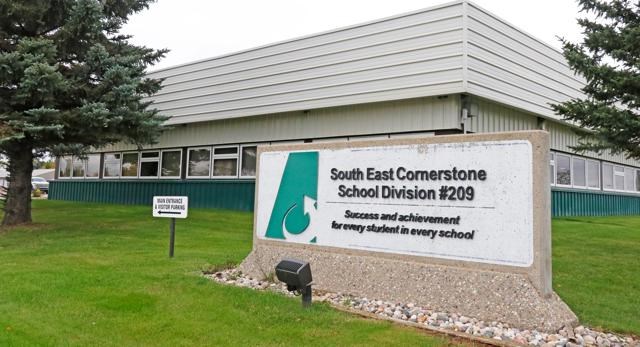“We were immersed in a pandemic but not defined by it,” said Lynn Little, presenting the first page of a brief PowerPoint presentation to the board of trustees Wednesday during their regular open business session.
Little was reflecting on the South East Cornerstone Public School Division’s school year that is quickly coming to a conclusion.
“We had to create safe learning and teaching environments following Saskatchewan’s re-opening plan that we used for direction,” she added.
Little said administration personnel appreciated the weekly advisory sessions they had with provincial medical health officials as well as local medical health officers.
The division worked on providing the recommended personal protective equipment and materials, limited physical contacts, which was very challenging on several fronts, and limited the sharing of materials. Additional attention was placed on hygiene practices and any extracurricular activities followed provincial guidelines, which, she said, changed a few times.
The cleaning of school and office facilities also followed the guidelines as did the school nutrition programs.
“We increased cleaning staff as well as mental health, social and emotional supports personnel. Students with intensive needs were recipients of special programs according to their specific needs.”
Communications and transportation were other special areas of concern, Little said. Bus cleaning took on an extra special meaning and drivers were even more attentive as to who was on board.
Families were provided with a few options with regards to their children’s learning experiences under pandemic conditions. There were some “in class” openings during the school year as long as health and safety rules were followed.
“There was a large increase in Cyber Stone virtual school,” said Little.
Cyber Stone expanded to include Kindergarten to Grade 12 and as a result, led to an increase in staffing. There was also an increase in home-based education.
“We encouraged students and parents not to change practices in mid-stream, from one course of action to another. Only a few did. I am glad we had the opportunity to do that,” she said, referring to the options that were laid out for students and families.
The various levels of precautions were again outlined for the benefit of the school board members. Level 2, for instance, included masking recommendations at the start of the school year and that moved to a public health mandate of “masking for all,” on Nov. 27.
The Level 3 action plan included the division’s two comprehensive high schools in Weyburn and Estevan since they were the only facilities catering to 600 students or more. Splitting schedules was mandated for them on Nov. 13.
“All schools moved to Level 4 after the Easter break for two weeks this year,” Little said.
After that period, due to the variants of concern, the more restrictive Level 4 edicts were put in place on a school-by-school basis according to the number of COVID cases, or positive test results revealed in each facility. The highest count of COVID exposures were 13 in one school over the course of the year.
Nine schools had staff and/or students who tested positive at one time or another; however, they did not attend school while infectious and another five schools reported no cases of COVID during the school year.
Those schools included Wapella, Carievale, Alameda, Lampman and Gladmar.
“As of June 11, we do not have any classes in remote learning situations,” Little said.
Contact tracing is continuing at the high school levels and graduation and farewell outings are resuming with guidelines being followed. That means a gathering of up to 150 for an outdoor exercise.
“Although not all data is completed and available for the year end, we have monitored throughout the year, and overall while there are some opportunities for focus and growth next year, students have progressed well. Regarding COVID restrictions, from data and feedback, we learned that some parents and students would have felt more comfortable with more restrictions, and contrasting, there were others who have called for fewer restrictions,” Little said.
Throughout the year, communication has been a challenge, she suggested.
Further guidelines that could be carried into a new school year are expected to be released by late July so that school divisions around the province can prepare for what September 2021 will look like.
“But we expect to return to more normal practices next August. Some of these guidelines will be dependent on vaccines for young people 12 and under and their efficacy ratings with variants of concern,” she said.
In the interim periods, mental health issues and the well-being of students and staff were of primary concern and the division continued to work with school community councils so that come next school year, schools can once again be used as hubs within their communities.
On the academic side, Little said special attention will be paid to youngsters and their reading and comprehension skills in the Grade 1-3 grouping since it is well documented that these are key, foundational and scaffolding years.
Little concluded by thanking the public and board members “for walking this journey with us.”




